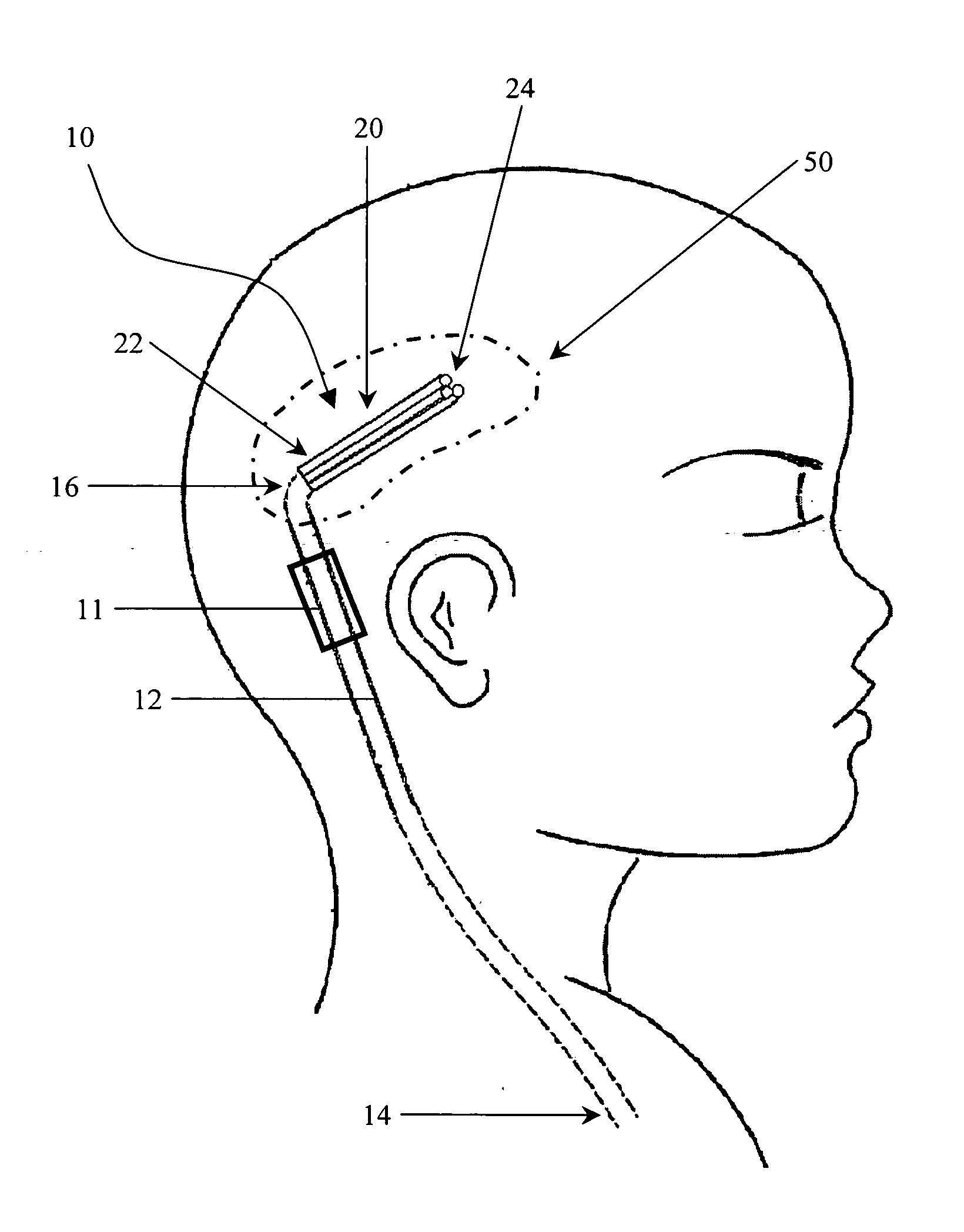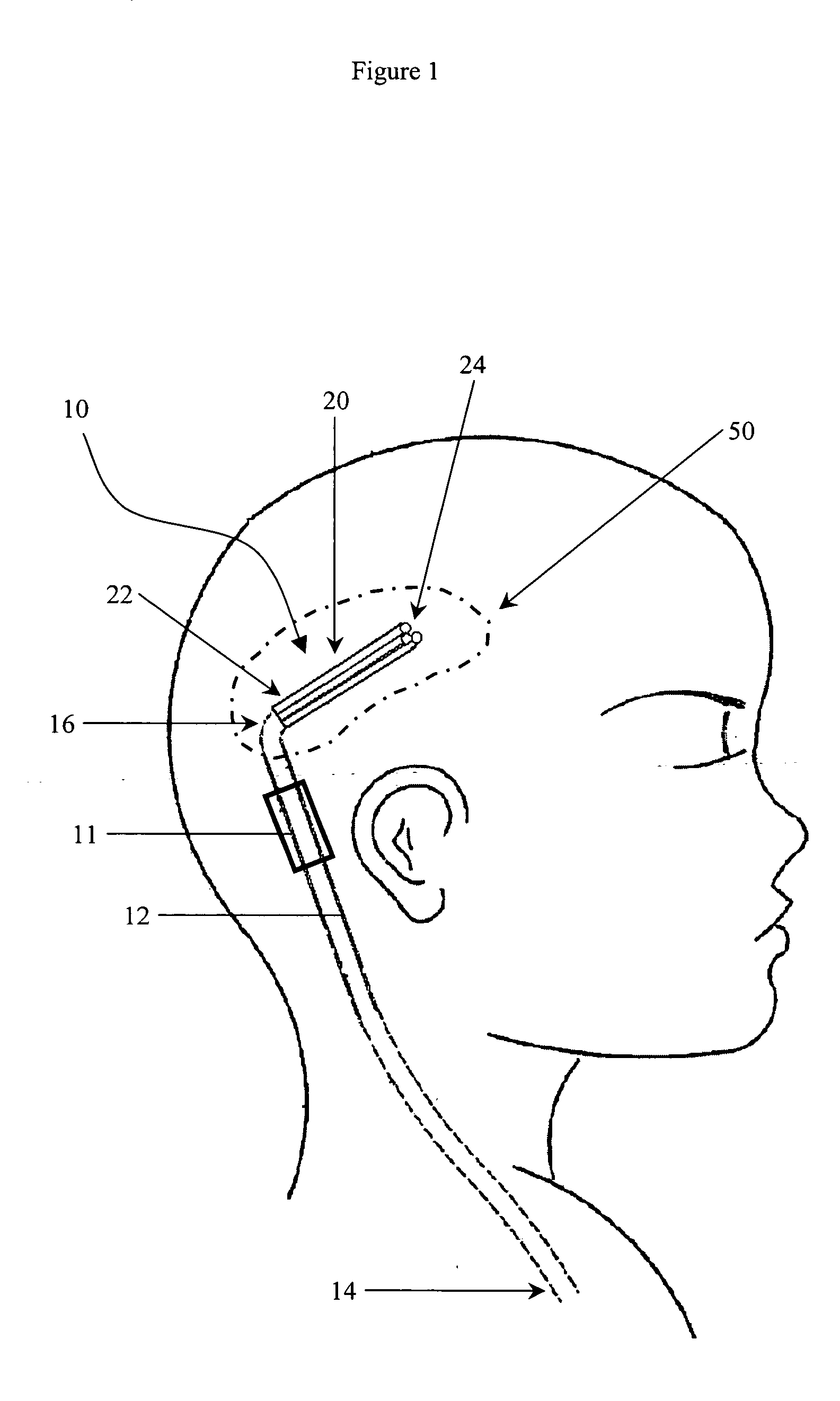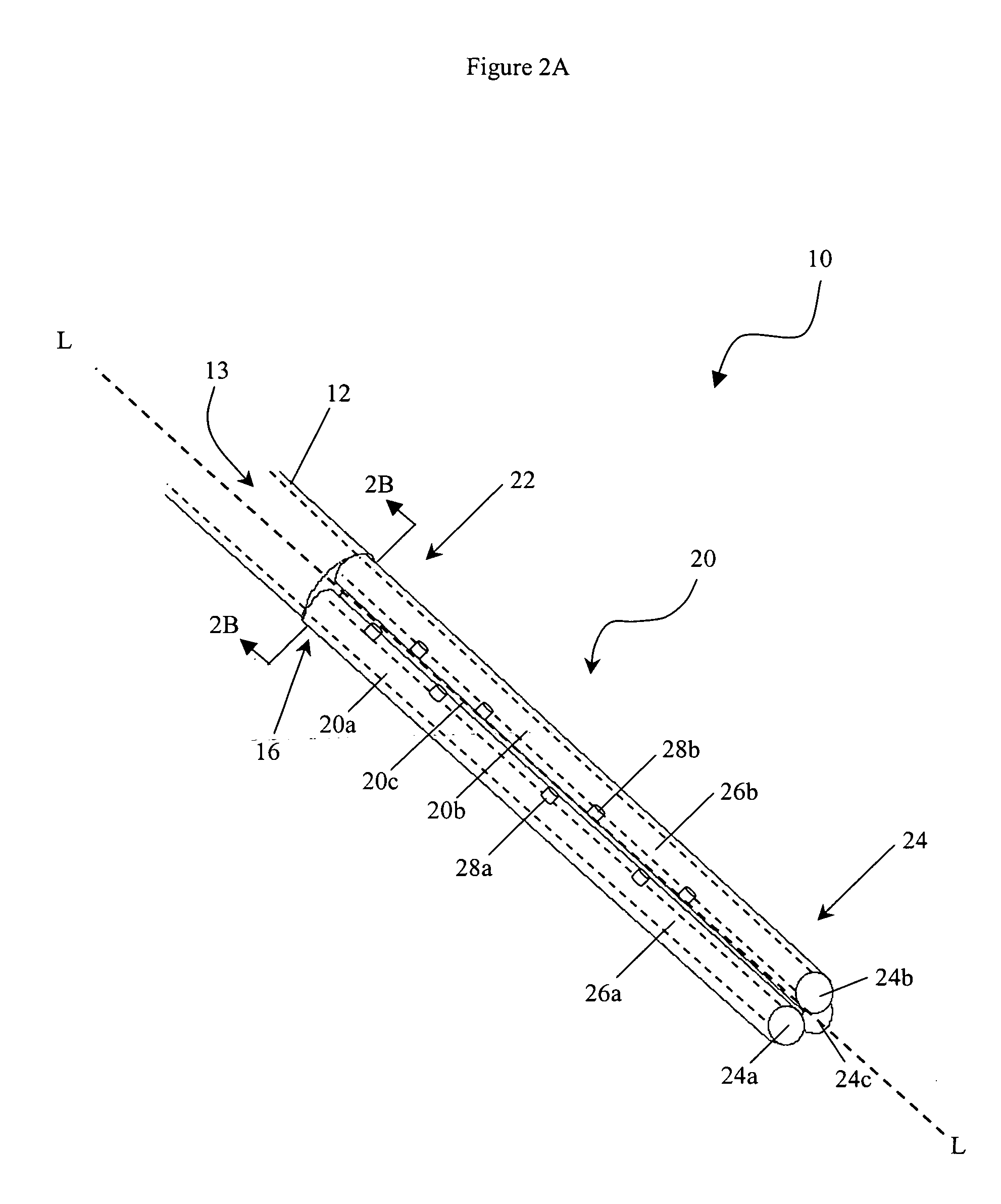Multi-catheter insertion device and method
a multi-catheter, catheter technology, applied in the direction of catheters, other medical devices, guide needles, etc., can solve the problems of obstruction or clogging, interfere with the perfusion of the nervous system, and obstruction of the system, so as to prevent or reduce the risk of clogging
- Summary
- Abstract
- Description
- Claims
- Application Information
AI Technical Summary
Benefits of technology
Problems solved by technology
Method used
Image
Examples
Embodiment Construction
[0026] As shown in FIG. 1, the present invention generally provides an implantable shunt device 10 including a primary catheter 12, or trunk conduit, having a first, open end 14, and a second, connecting end 16, and at least two secondary catheters 20, or branch conduits, extending from the connecting end 16 of the primary catheter 12. For illustration purposes, only three secondary catheters 20a, 20b, 20c are shown. However, a person having ordinary skill in the art will appreciate that the shunt device 10 can include two or more secondary catheters 20.
[0027] The shunt device 10 can be used for a variety of diagnostic and therapeutic procedures, including for the removal or introduction of fluid to a treatment site. In an exemplary embodiment, as shown in FIG. 1, the shunt device is used for treating hydrocephalus. The secondary catheters 20, and optionally at least a portion of the primary catheter 12, are implanted within one of the patient's cerebral ventricles, which contains ...
PUM
 Login to View More
Login to View More Abstract
Description
Claims
Application Information
 Login to View More
Login to View More - R&D
- Intellectual Property
- Life Sciences
- Materials
- Tech Scout
- Unparalleled Data Quality
- Higher Quality Content
- 60% Fewer Hallucinations
Browse by: Latest US Patents, China's latest patents, Technical Efficacy Thesaurus, Application Domain, Technology Topic, Popular Technical Reports.
© 2025 PatSnap. All rights reserved.Legal|Privacy policy|Modern Slavery Act Transparency Statement|Sitemap|About US| Contact US: help@patsnap.com



